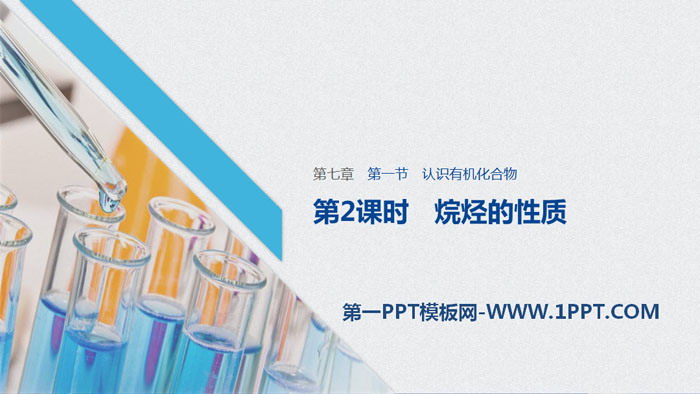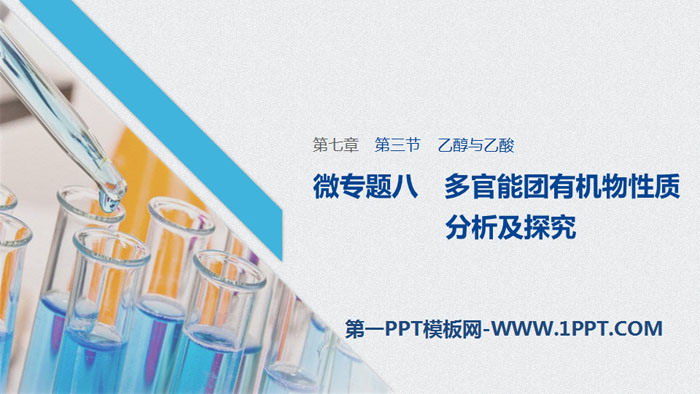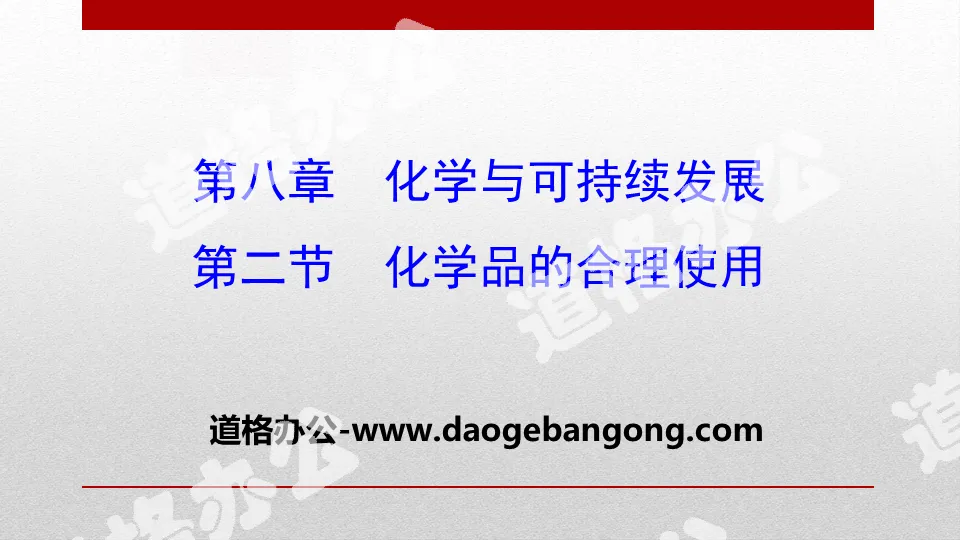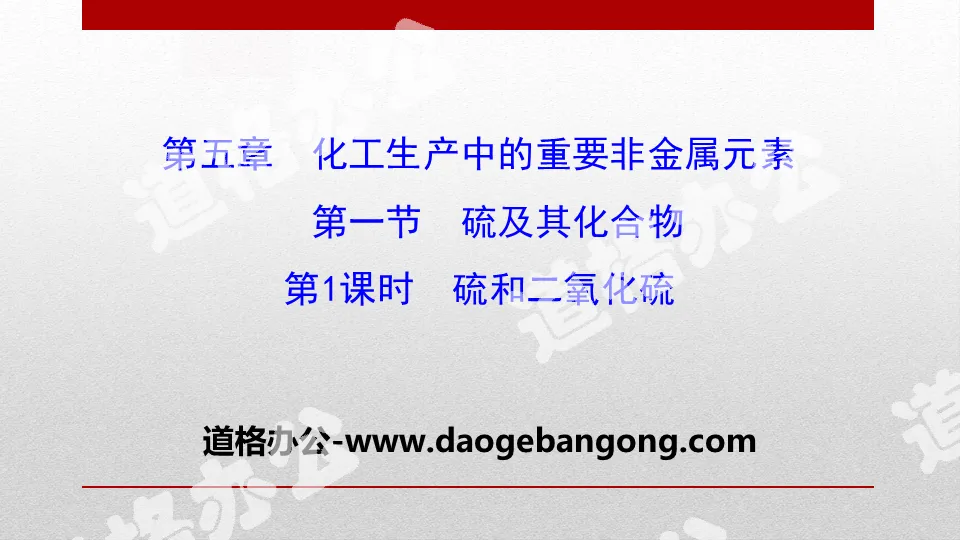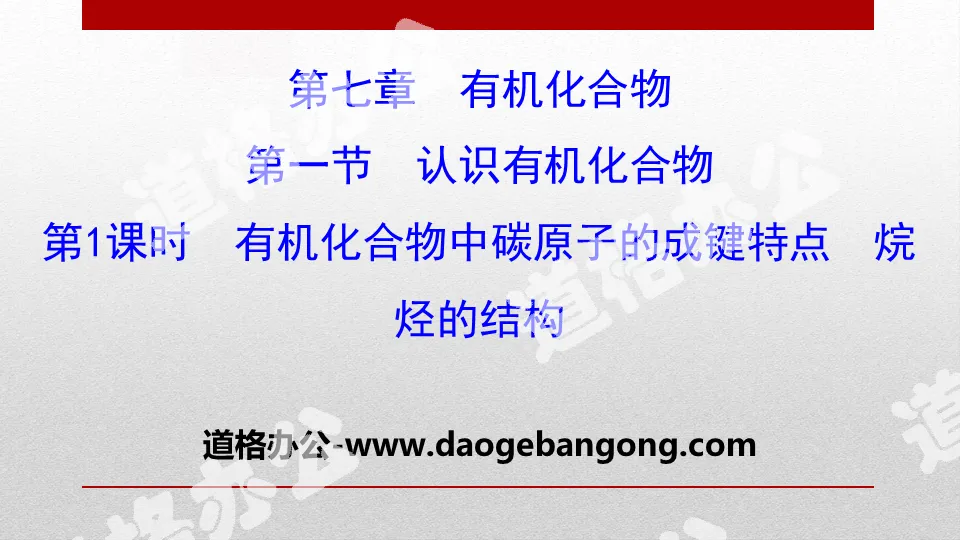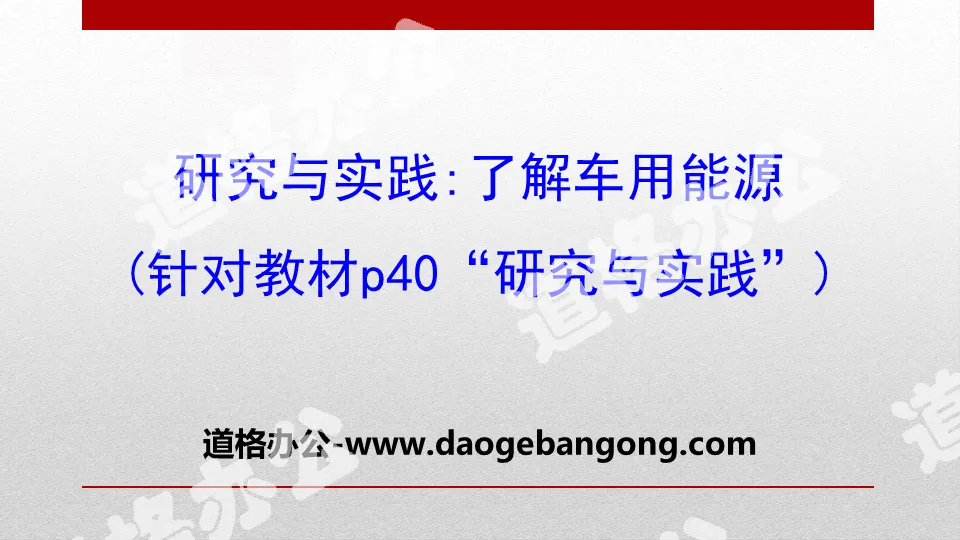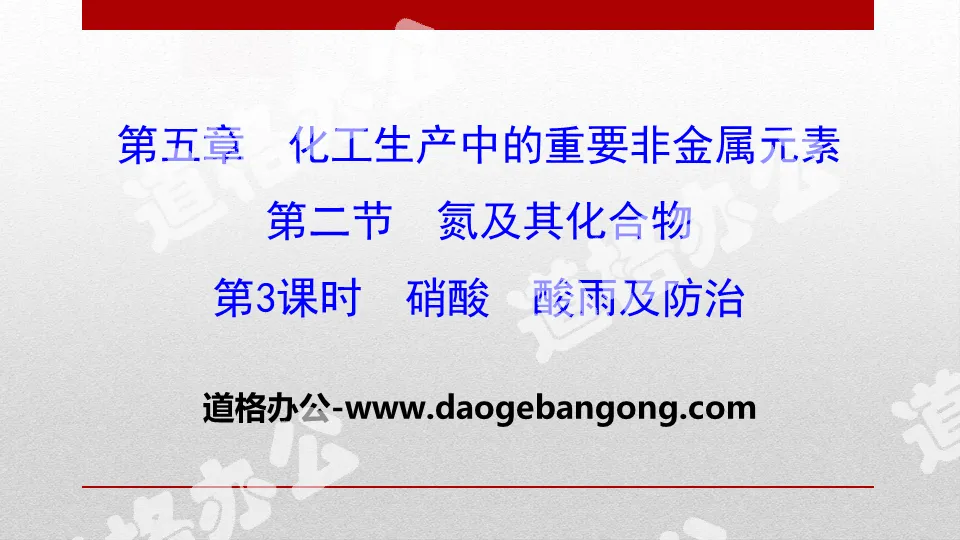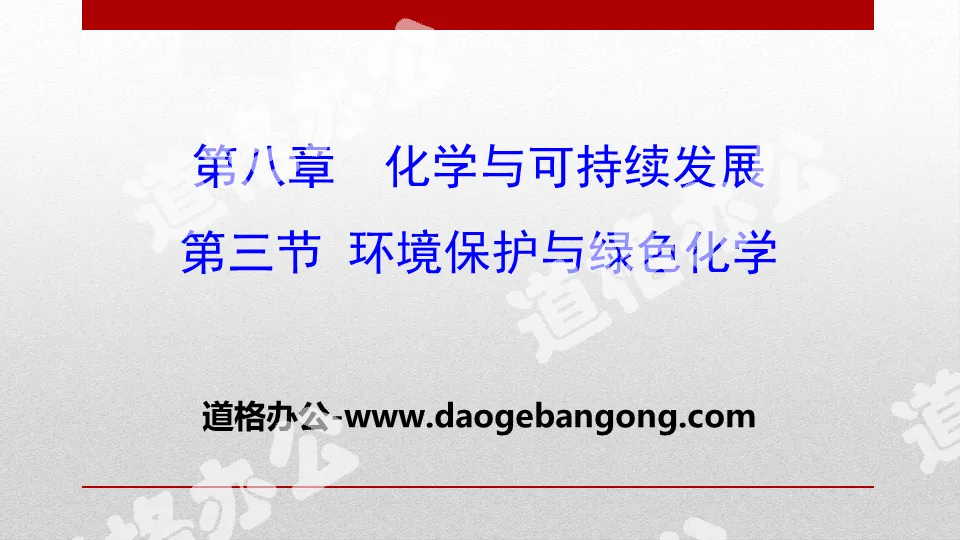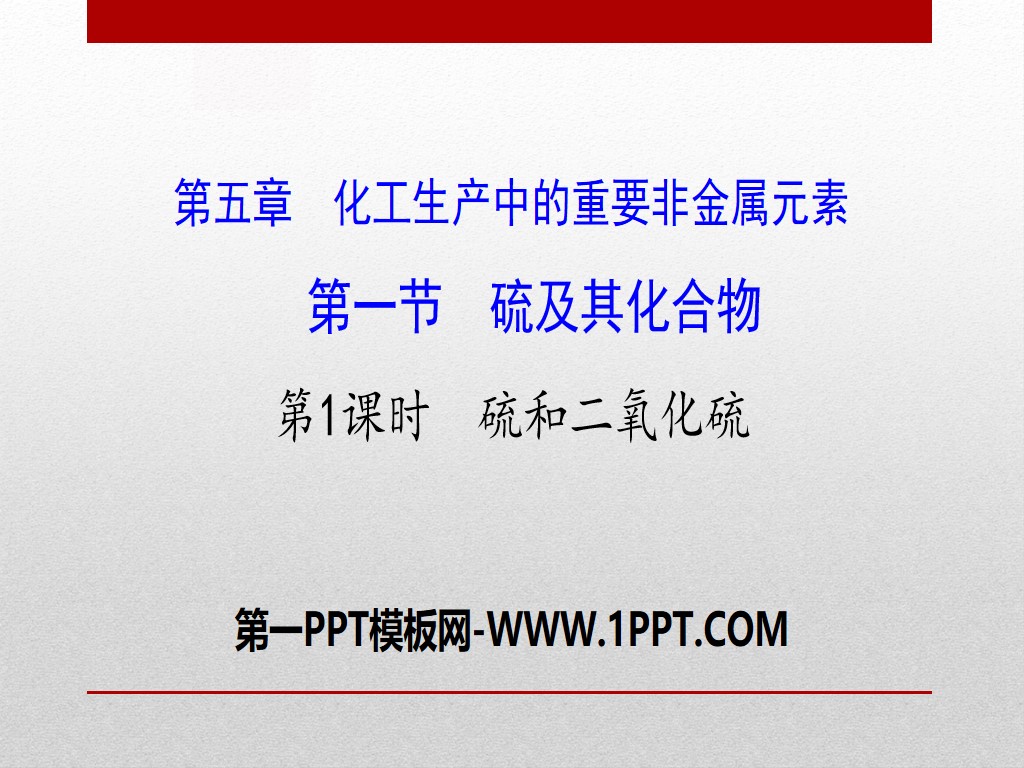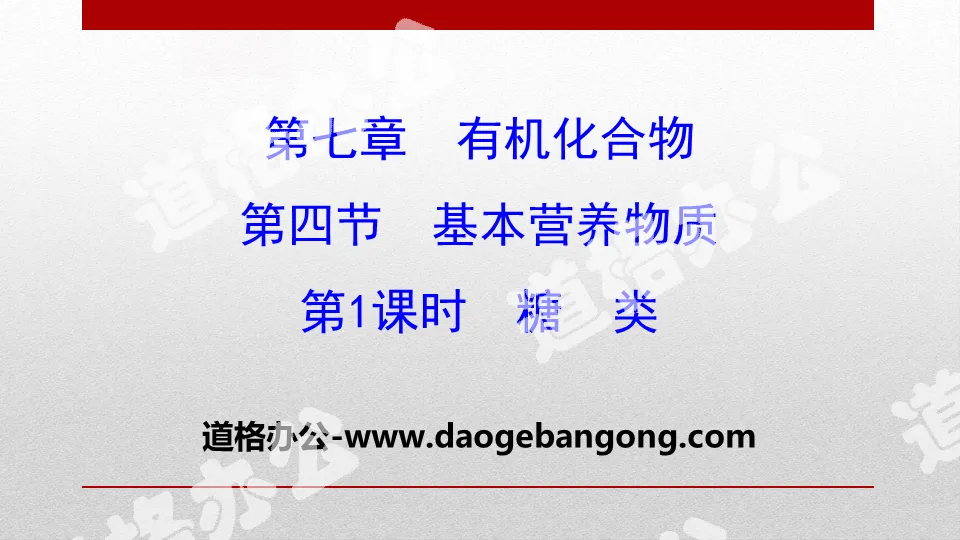
| Category | Format | Size |
|---|---|---|
| People's Education Press High School Chemistry Compulsory Course 2 | pptx | 6 MB |
Description
"Basic Nutrients" Organic Compounds PPT (Lesson 1 Sugar)
Part 1: Essential knowledge and foundation of literacy
1. Composition and classification of sugars
1. Composition of sugars: Sugars are a type of organic compounds composed of three elements: ________. Most of their compositions can be expressed by the general formula Cn(H2O)m. They were called ___________ in the past.
2. Classification of sugars: Sugars can be divided into _____, _____, and _____ based on whether they can be hydrolyzed and the amount of hydrolyzate products.
3. Important carbohydrates:
[Situation·Thinking] Do sugars have to have sweet taste? Are substances that have sweet taste definitely sugars?
Tip: Sugary substances are not necessarily sweet, such as starch and cellulose; sweet substances are not necessarily sugars, such as saccharin.
2. Glucose
1. Structure of glucose
Glucose is a colorless crystal with a sweet taste that can be dissolved in water. Its molecular formula is ______. The simplified structural formula of glucose is: _______________. There are two atomic groups in the glucose molecule that determine the chemical properties of glucose. They are ___________ and
2.Main chemical properties
(1) React with newly prepared Cu(OH)2 suspension. Complete the following labs:
Experimental phenomena:_______________________.
Experimental conclusion: Glucose has _______ and can be oxidized by weak oxidants such as ______________ to form brick-red ____ precipitate.
(2) Add 1 mL of 2% AgNO3 solution to the test tube, then add 2% dilute ammonia solution drop by drop while shaking the test tube until the precipitate is just dissolved to obtain a silver ammonia solution, then add 1 mL of 10% glucose solution, shake, Then heat it in a water bath and observe the phenomenon.
Experimental phenomenon: ___________ is formed on the inner wall of the test tube.
Experimental conclusion: Glucose has _____ properties and can be oxidized by weak oxidants such as __________ to produce bright silver mirrors.
【Micro thinking】
People who lose the ability to self-regulate blood sugar levels in the body will develop diabetes. The patient's urine contains glucose. How to test whether a patient has diabetes through experiments?
Tip: Add NaOH and CuSO4 solution to a patient's urine and heat it slightly. If a brick-red precipitate is observed, it means that the person has diabetes.
3. Sucrose, starch, cellulose
1. Characteristic reaction of starch: Drop iodine onto a piece of potato and bread respectively, observe and record the experimental phenomena.
Phenomenon: _____. in conclusion: _____________.
2. Hydrolysis reaction of sucrose, starch and cellulose
(1) The hydrolysis equation of sucrose is
(2) Hydrolysis reaction of starch or cellulose
Phenomenon:_____________________;
explain:__________________________________________;
The hydrolysis equation of starch or cellulose is
(3) Slowly oxidizes in the human body to provide energy required for human activities. Write the chemical equation for the oxidation of glucose in the human body: _______________________.
(4) The reaction of glucose brewing is ____________________.
【Smart Judgment】
(1) Monosaccharides are sugars with the smallest number of carbon atoms. ()
Tip:×. Monosaccharides are sugars that can no longer be hydrolyzed.
(2) Sucrose and glucose can be distinguished by using newly prepared copper hydroxide suspension. ()
Tips:√. Glucose can react with the newly prepared copper hydroxide suspension to form a brick-red precipitate, but sucrose cannot.
(3) Sucrose and maltose are isomers. ()
Tips:√. The chemical formulas of sucrose and maltose are both C12H22O11, but their structures are different, so they are isomers.
(4) The final products of starch hydrolysis are carbon dioxide and water. ()
Tip:×. The final product of starch hydrolysis is glucose.
Basic nutrients PPT, part 2: key abilities and literacy formation
Knowledge point 1: Structure and properties of glucose
[Key points to clarify doubts]
1. Molecular structure and properties of glucose
(1) Molecular structural characteristics.
(2) Chemical properties.
Functional groups determine the main chemical properties of substances, so glucose has the properties of both aldehyde groups and hydroxyl groups.
【Think·Discussion】
(1) What should be paid attention to in the silver mirror reaction experiment of glucose?
Tips: ① The test tube is clean; ② The silver ammonia solution should be prepared freshly; ③ Use a water bath for heating; ④ Do not shake the test tube.
(2) What matters should be paid attention to when conducting experiments on the reaction between glucose and newly prepared Cu(OH)2 suspension?
Tips: ① Cu(OH)2 suspension should be prepared immediately; ② NaOH should be excessive when preparing. Drop a small amount of CuSO4 into the excess NaOH solution. If there is too much CuSO4, black CuO precipitate will easily form; ③ Use an alcohol lamp Heat to boiling.
【Case Demonstration】
[Typical example] Ribose is an important raw material for the synthesis of nucleic acids. Its simplified structural formula is CH2OH—CHOH—CHOH—CHOH—CHO. Among the following descriptions about ribose, the correct one is ()
A.Do not discolor acidic potassium permanganate solution
B. Can react with silver ammonia solution to form silver mirror
C. Homologues with glucose
D. 1 mol of ribose can react with excess sodium to produce 1 mol of hydrogen.
[Problem Solving Guide] You should pay attention to the following two points when answering this question:
(1) Homologues have similar structures, but differ in molecular composition by one or several "CH2" atomic groups.
(2) Ribose contains hydroxyl groups, which can discolor acidic potassium permanganate solution and react with sodium to generate hydrogen gas and 2—OH~H2. Ribose contains aldehyde groups, which can undergo silver mirror reactions.
[Analysis] Choose B. Ribose contains -OH and -CHO, both of which can undergo oxidation reactions with potassium permanganate and cause the acidic potassium permanganate solution to fade, so A is wrong; because there is -CHO in the molecule, silver mirror reaction can occur, so B Correct; the number of hydroxyl groups in ribose and glucose molecules is different and they are not homologues, so C is wrong;
1 mol of ribose reacts with excess sodium to produce 2 mol of hydrogen, so D is wrong.
Knowledge point 2: Hydrolysis reaction of sugars
[Key points to clarify doubts]
1. Hydrolysis of carbohydrates
(1)Hydrolysis rules
(2)Hydrolysis conditions
For the hydrolysis of sucrose and starch, dilute sulfuric acid is used as a catalyst and water bath heating is performed.
2. Experimental procedures for testing starch hydrolysis and degree of hydrolysis
【Think·Discussion】
Can I directly add iodine water to the neutralizing solution during the experiment to check whether starch is present?
Tip: No. Because I2 reacts with NaOH, the presence of starch cannot be tested.
【Case Demonstration】
[Typical example] To test the degree of hydrolysis of starch, the following experimental operation process is provided: ① Take a small amount of starch and add water to make a solution, ② Heating, ③ Add alkali solution to neutralize and make it alkaline, ④ Add silver ammonia solution, ⑤ Add Add a few drops of dilute sulfuric acid, ⑥ reheat (water bath), ⑦ add a few drops of iodine water.
Three students A, B, and C conducted the following three experiments respectively and pointed out the purpose or phenomenon of their experiments:
(1) A: ①→⑤→②→③→④→⑥, phenomenon: no silver mirror is produced. Student A’s experimental conclusion is __________.
(2) B: ①→⑤→②→③→④→⑥, phenomenon: silver mirror is produced;
①→⑤→②→⑦, phenomenon: the solution turns blue.
Student B’s experimental conclusion is ____________.
(3) C: ①→⑤→②→⑦, phenomenon: ____________________. The conclusion of Student C’s experiment is that the starch has been completely hydrolyzed.
[Problem Solving Guide] You should pay attention to the following two points when answering this question:
(1) Silver ammonia solution cannot exist under acidic conditions, and the solution must be alkaline when testing glucose;
(2) Add iodine water dropwise and find that it does not change the blue color, indicating that there is no starch.
[Analysis] (1) There is no glucose that can undergo silver mirror reaction, so it can be proved that starch has not started to be hydrolyzed. (2) A silver mirror is produced, which proves that the starch has been hydrolyzed; the solution turns blue, which proves that there is still starch left. (3) The starch has been completely hydrolyzed, and the solution does not change blue when iodine water is added.
Keywords: Free download of PPT courseware for high school chemistry compulsory course II from the People's Education Press, PPT download of basic nutrients, PPT download of organic compounds, PPT download of sugars, .PPT format;
For more information about the "Organic Compounds Basic Nutrients Sugars" PPT courseware, please click the Organic Compounds ppt Basic Nutrients ppt Sugars ppt label.
"Basic Nutrients" Organic Compounds PPT (Protein and Oil in Lesson 2):
"Basic Nutrients" Organic Compounds PPT (Lesson 2 Proteins and Oils) Part One Content: Foundation of Essential Knowledge Literacy 1. Protein 1. Composition and Characteristics Protein is the basic material that makes up cells. It is a very complex natural organic polymer. Depend on_______..
"Ethanol and Acetic Acid" Organic Compounds PPT (Lesson 2 Acetic Acid):
"Ethanol and Acetic Acid" Organic Compounds PPT (Lesson 2: Acetic Acid) Part One Content: Foundation for Necessary Knowledge Literacy 1. Acetic Acid 1. Physical properties of acetic acid [Micro Thoughts] The melting point of acetic acid is 16.6°C. How to store glacial acetic acid in winter? Take out a small amount of acetic acid from the reagent bottle..
"Ethanol and Acetic Acid" Organic Compounds PPT (Lesson 1 Ethanol):
"Ethanol and Acetic Acid" Organic Compounds PPT (Lesson 1 Ethanol) Part One Content: Foundation of Essential Knowledge Literacy 1. Physical Properties, Composition and Structure of Ethanol 1. Physical Properties of Ethanol 2. Composition and Structure of Ethanol [Smart Judgment] (1) The simplified structural formula of ethanol is C..
File Info
Update Time: 2024-07-01
This template belongs to Chemistry courseware People's Education Press High School Chemistry Compulsory Course 2 industry PPT template
"Basic Nutrients" Organic Compounds PPT (Lesson 1 Sugar) Simple campus recruitment activity planning plan summary enterprise and institution recruitment publicity lecture PPT template is a general PPT template for business post competition provided by the manuscript PPT, simple campus recruitment activity planning plan summary enterprise and institution recruitment promotion Lecture PPT template, you can edit and modify the text and pictures in the source file by downloading the source file. If you want more exquisite business PPT templates, you can come to grid resource. Doug resource PPT, massive PPT template slide material download, we only make high-quality PPT templates!
Tips: If you open the template and feel that it is not suitable for all your needs, you can search for related content "Basic Nutrients" Organic Compounds PPT (Lesson 1 Sugar) is enough.
How to use the Windows system template
Directly decompress the file and use it with office or wps
How to use the Mac system template
Directly decompress the file and use it Office or wps can be used
Related reading
For more detailed PPT-related tutorials and font tutorials, you can view: Click to see
How to create a high-quality technological sense PPT? 4 ways to share the bottom of the box
Notice
Do not download in WeChat, Zhihu, QQ, built-in browsers, please use mobile browsers to download! If you are a mobile phone user, please download it on your computer!
1. The manuscript PPT is only for study and reference, please delete it 24 hours after downloading.
2. If the resource involves your legitimate rights and interests, delete it immediately.
3. Contact information: service@daogebangong.com
"Basic Nutrients" Organic Compounds PPT (Lesson 1 Sugar), due to usage restrictions, it is only for personal study and reference use. For commercial use, please go to the relevant official website for authorization.
(Personal non-commercial use refers to the use of this font to complete the display of personal works, including but not limited to the design of personal papers, resumes, etc.)
Preview



